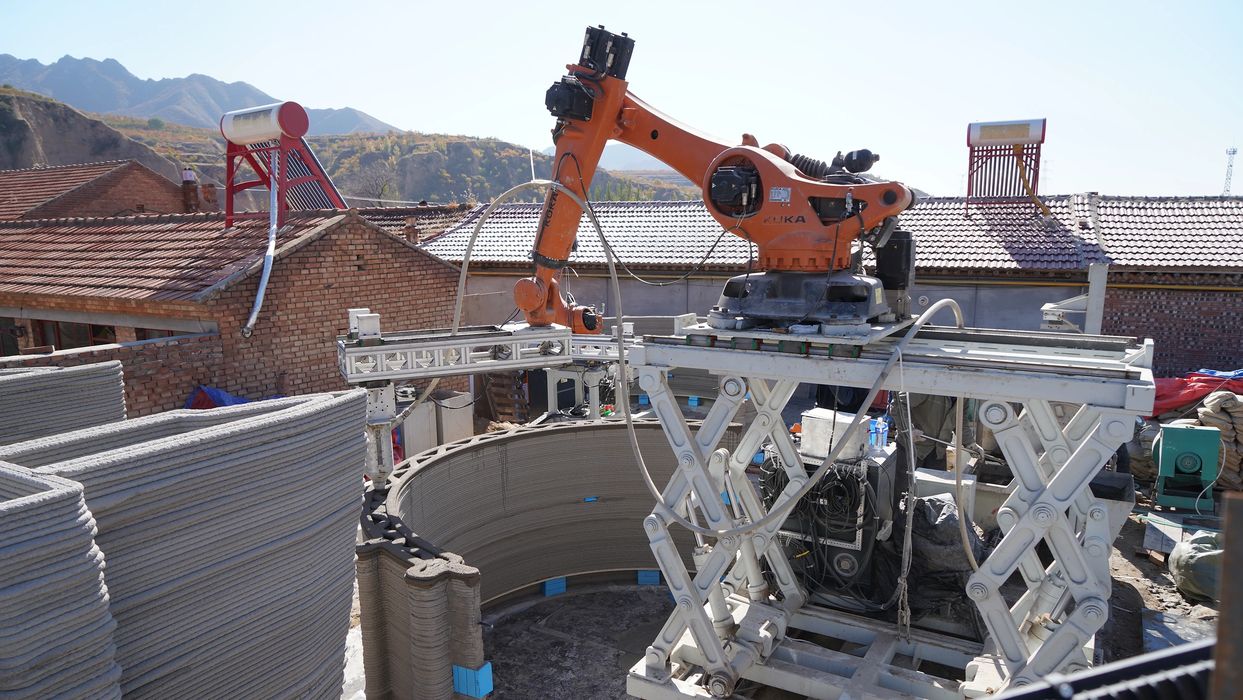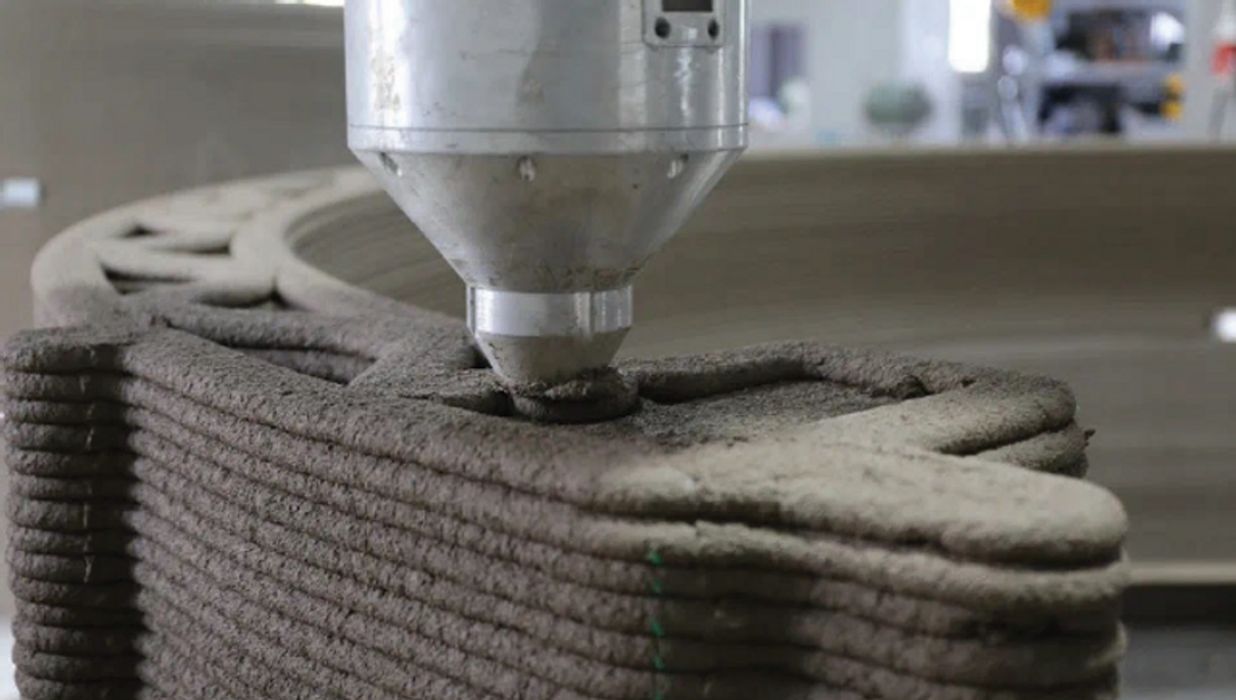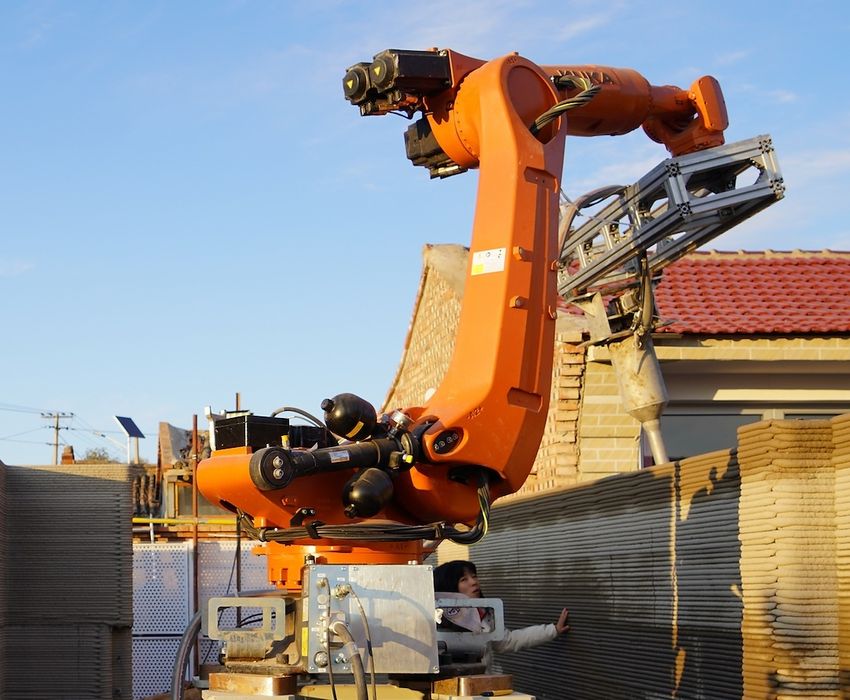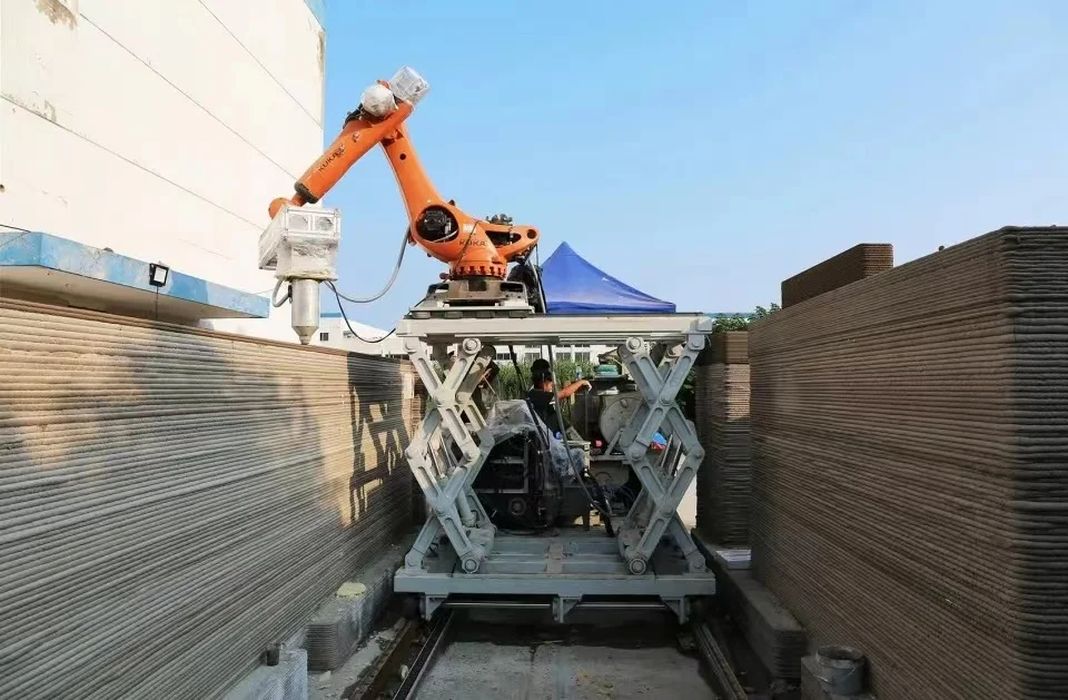
There are now multiple construction 3D printer manufacturers on the planet, and one of them is RIC Technology.
RIC Technology is headquartered in Torrance, California, so you might think it is a US company. It’s actually a branch of Advanced Intelligent Construction Technology (AICT), and they’ve brought their technology from China to the US via RIC Technology.

The technology is concrete extrusion, the most common approach for construction 3D printers these days. A wet slurry is pumped through to a robotically controlled print head, which deposits the material in thick lines at the target site.
What material is used? RIC Technology explains:
“After 149,760 research hours involving thousands of tons of test materials, our product is consistent and smooth, and meets rigorous material standard tests. Fibers are introduced to increase tensile strength of the mixture. Other specialty additives are used to achieve desired results in different scales and environments. The unique printing material formula has strong performance and stable rheology.”
AICT has delivered a number of unique construction 3D printing projects in Asia over the past few years, including a concrete house, a large 3D printed bridge, a reading cabin, a garden and even a labyrinth. Because of this, the technology is quite mature and that’s good news for those in the West now able to access the equipment.
RIC Technology offers three models of their construction 3D printer.
The base model is the RIC-0, which is a gantry-mounted affair that prints concrete within a 6000 x 6000 x 2700 mm build volume. What’s interesting is that it apparently takes only four hours to set up the RIC-0 for operation, unlike some alternatives that can take days to set up. The RIC-0 package, which includes the robotic arm, control unit and training is available for only US$160,000.

The US$240,000 RIC-1 is a larger system mounted on tracks. With its ability to slide back and forth, the RIC-1 can 3D print concrete structures up to 20m long, which has to be among the biggest 3D printer build volumes available.

Finally, there’s the RIC-2, which has a hybrid motion system involving tracks and a scissor lift. This combination allows the RIC-2 to build taller structures. Officially, the build volume of the RIC-2 is 8000 x 20000 x 8000 mm. The RIC-2 is more complex and requires a day to set up.
Both the RIC-1 and RIC-2 can optionally have longer tracks, making the length dimension on their build volumes to be effectively unlimited.
In addition to the 3D printers, RIC Technology also offers design services. This is a very smart move as the construction industry is still largely unaware of and inexperienced in construction 3D printing, and much help will be required.
The “RIC Studio” has advanced software tools and templates to design, model or generate highly complex structural designs for printing. The studio is staffed by a team of architects familiar with parametric architecture design.
The market for construction 3D printing equipment and services in the West is getting a bit more competitive.
Via RIC Technology
